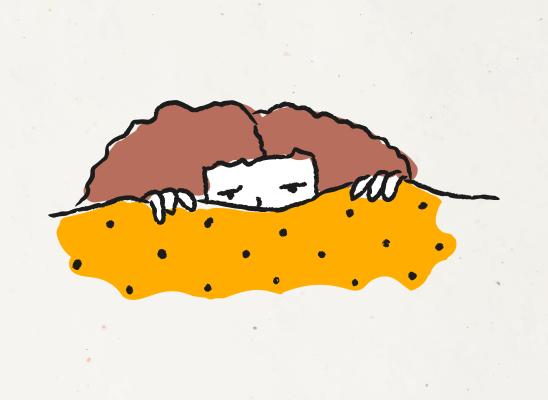A Different Kind of Self-Help

Online test
Find out the severity of your symptoms with this free online test
If you or a loved one is living with repetitive hair pulling (trichotillomania), you’ve probably looked at every option out there for help. Most often, you’ve probably come across a treatment known as Habit Reversal Training (HRT). HRT is generally considered the gold standard for the treatment of body-focused repetitive disorders (BFRBs) like hair pulling. It is most often provided via therapy.
Maybe the idea of traditional therapy is just too overwhelming, isn’t feasible, or just doesn’t seem like the right fit for you. You’re not alone. One of the things we know about hair pulling is that it is highly heterogenous, meaning that its presentation and how people experience it varies quite a bit. In other words, a one-size-fits-all approach doesn’t work for everyone. And that’s ok.
To be fair, some people do better with a therapist. Others do well with self-help. But all self-help is not created equally. Wouldn’t it be great to have a self-help approach that gave you many of the same benefits as more traditional therapy?
Such a program might be closer to reality than you think. One of the things we learned during the pandemic was that there’s more than one way to deliver treatment and that well-structured self-help programs can be helpful.
Three approaches to treating hair pulling that seem to lend themselves well to a structured self-help protocol are HRT and two variations of a technique known as Decoupling.
Habit Reversal Training
Of the behavioral therapies, HRT has perhaps been studied the most extensively and enjoys a great deal of support for its effectiveness.
HRT works on the principle of competing responses. Simply put, competing responses means that a person can’t do two opposing things at the same time. HRT consists of a set of key components, each focused on one aspect of the behavior, with the goal of facilitating behavior change. In this case of hair pulling, the goal is a reduction or cessation of the pulling behavior.
- Awareness Training consists of techniques to help a person learn to recognize triggers and circumstances in which picking or pulling are most likely to happen.
- Competing Response Training is the process of teaching the person to substitute another behavior for the picking or pulling that is not compatible with their BFRB behavior.
- Finally, social support and behavioral reward systems are used to strengthen the behavior change. Social support training involves identifying and engaging supportive people who can help to prompt the person to use their competing response or give praise when the person is able to use their newfound skills.
Historically, HRT is provided via therapy but an advantage of HRT is that it’s relatively easy to learn, lending itself to a self-help format. HRT is effective in reducing symptoms at least in the short term. It has strong awareness, behavior-blocking, and reinforcement features.
Decoupling
Decoupling (DC) is a strategy that involves the unhooking or separation of the various elements of undesirable behavior and replacing them with new ones. DC works by mimicking the exact movements of an unwanted behavior like hair pulling (e.g., moving the fingers towards the hair) but then diverting the hand just before pulling to a different, harmless action that bears some resemblance to the pulling. By changing the endpoint, the urge for a sensation that involves the tip of the fingers is satisfied in a non-injurious way.
For example, the person might be instructed to direct their hand toward their hair just as if they were about to pull it. Just as the fingers reach the hair, they suddenly stretch their arm over their head or tug the ear lobe. The need for tactile stimulation is met without pulling hair.
Decoupling has been shown in studies to be effective in reducing hair pulling both in the short term and over time.
A related version of decoupling called decoupling in sensu (DC-is) involves visualization and response. With eyes closed, the person imagines movements that precede the BFRB (e.g., hair pulling). Just before the completion of the imagined act, it is interrupted by an actual movement such as making a fist and quickly pulling the hand away.
DC may sound a lot like HRT, and you’d be right. In fact, DC is generally considered to be a variant of HRT. What is different is that DC does not require an entirely new behavior to replace the pulling. On the contrary, in DC the new behavior must bear some resemblance to the act of hair pulling.
So, you’re probably wondering, is one approach better than the others? Can they work as self-help strategies? What does the research say?
Comparing the Strategies
In what is thought to be the first study of its kind, researchers compared self-help protocols of HRT, DC, and DC-is in a heterogeneous group of people with BFRBs. Over a 4-week period, participants were randomly assigned to one of three groups (HRT, DC, DC-is) and used a corresponding structured self-help protocol.
- Both HRT and DC-is received positive feedback from participants
- All three approaches showed a positive reduction in BFRB symptoms with the DC group showing the most improvement (35%), followed by the DC-is group (23.3%), and the HRT group (10%)
- Completion rate was best for DC-is group
- DC was less effective for skin picking
These findings suggest that structured self-help protocols are generally well-received and can be effective in reducing symptoms of BFRBs. Each protocol yielded benefits, especially DC-is.
What’s Next?
Because of the limited time frame, it is unclear whether gains would be maintained over time and that may be the focus of future research. It was also noted that future research might explore the efficacy of combining protocols or using other delivery systems (e.g., video platforms).
With growing knowledge and more avenues for delivering care, new ways of treating BFRBs and other disorders are emerging. What we are learning is that treatment is never one-size-fits-all. Sound self-help protocols can be a beneficial part of the treatment process.
References
1. Weidt, S., Klaghofer, R., Kuenburg, A., Bruehl, A. B., Delsignore, A., Moritz, S., & Rufer, M. (2015). Internet-based self-help for trichotillomania: a randomized controlled study comparing decoupling and progressive muscle relaxation. Psychotherapy and psychosomatics, 84(6), 359–367. https://pubmed.ncbi.nlm.nih.gov/26398632/
2. Moritz, S., Penney, D., Ahmed, K., & Schmotz, S. (2022). A Head-to-Head Comparison of Three Self-Help Techniques to Reduce Body-Focused Repetitive Behaviors. Behavior Modification, 46(4), 894–912. https://journals.sagepub.com/doi/full/10.1177/01454455211010707?rfr_dat=cr_pub++0pubmed&url_ver=Z39.88-2003&rfr_id=ori%3Arid%3Acrossref.org
Online test
Find out the severity of your symptoms with this free online test
Start your journey with TrichStop
Take control of your life and find freedom from hair pulling through professional therapy and evidence-based behavioral techniques.
Start Now



